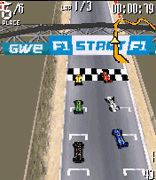

Tire wear increased as the races went on, and players would be required to pit for tires at least once during each race to remain competitive. Gear shifting was also required for three of the cars (and notably for 8 of the 9 levels of the game), and some courses required dozens of gear changes per lap. The circuits were accurately depicted as having both sharp and wide turns, thus requiring players to slow down to certain speeds for corners, instead of most arcade-style games, which allowed players to unrealistically take turns flat-out. Compared to most console racing games of its time, World GP was much more difficult. We just don’t have it, Grosjean told RACER. Andretti Autosport stews on ‘embarrassing’ Indy 500 qualifying.
-image.jpg)
Devlin DeFrancesco was slowest of the five in 26th. Four different cars were offered in the game, however, there were no car set-ups in the game, a feature most frequently associated with racing simulations. Marco Andretti was angry and answerless in 24th. It was the first NES racing game to feature an entire field of real-life drivers (although all but Andretti had pseudonyms), and rather accurately depicted the sixteen circuits on the Formula One schedule.

Instead of being an arcade-style driving game (such as Rad Racer, Al Unser Jr.'s Turbo Racing or Formula 1: Built To Win), World GP more closely resembled a simulation-style racing game. World GP was unique in that it deviated from most console racing games of its time.


 0 kommentar(er)
0 kommentar(er)
